Ryan Hall's Blog, page 368
August 12, 2015
20 Runners Who Could Make The 2016 U.S. Olympic Track Team

The track and field competition at the 2016 Olympic Games in Rio de Janeiro starts a year from today on Aug. 12, 2016. Although the U.S. team will be selected at the 2016 U.S. Olympic Trials—the marathon trials are on Feb. 13 in Los Angeles; track and field takes place July 1-10 in Eugene, Ore.—here’s a look at 20 of the most likely candidates to make the team in events from the 800m to the marathon in 2016. Some are longtime stars, others are youngsters on the rise, but there are also a lot of talented runners not on the list. The beauty of the American system is that there are no sure things. You’ve got to finish in the top three at the trials (and have the qualifying time) to earn a ticket to Rio. Many of these runners will probably make the team, but others will not. Who will rise to the occasion? The Road to Rio has begun!
RELATED: The U.S. Could Have One (or More!) 40Something Olympians in 2016!
Photo Gallery
1 of {count}
Back to Start
View Larger Image

Matthew Centrowitz Jr., 25, Eugene, Ore., 1500m (Nike)
Matthew Centrowitz has been one of the most consistent performers for the U.S. in recent years. The 25-year-old former Oregon Duck won a bronze medal at the 2011 world championships, a silver medal at the 2013 world championships and placed fourth (just .04 from the bronze medal) at the London Olympics. He's the reigning U.S. champion and is a medal contender for the 2015 world championships later this month in China. Photo: PhotoRun.net
View Larger Image
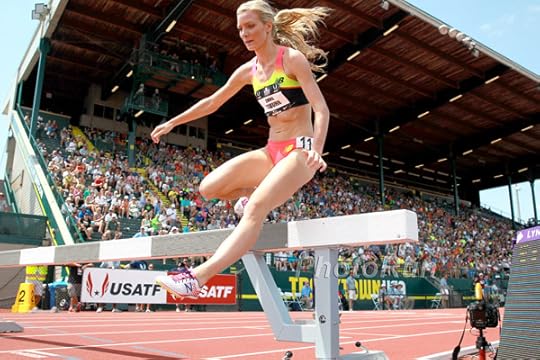
Emma Coburn, 24, Boulder, Colo., 3,000-meter steeplechase (New Balance)
Emma Coburn is a four-time U.S. champion in this event and a medal contender at the 2015 world championships in China. She's already finished 12th at the 2011 world championships and ninth in the 2012 Olympics, plus she's the American record-holder (9:11.42) in the event. Photo: PhotoRun.net
View Larger Image

Desiree Linden, 32, Rochester Hills, Mich., marathon (Brooks)
It's not easy to make the Olympic team in the marathon, but with as tough as she competes, it's hard not to like Desiree Linden's chances. After dealing with injuries, she's been back to form in the past year, placing fifth in the New York City Marathon (2:28:11) last fall and fourth at the Boston Marathon (2:25:39). She also had success on the track this year, winning the silver medal in the 10,000m at the Pan American Games. Photo: PhotoRun.net
View Larger Image
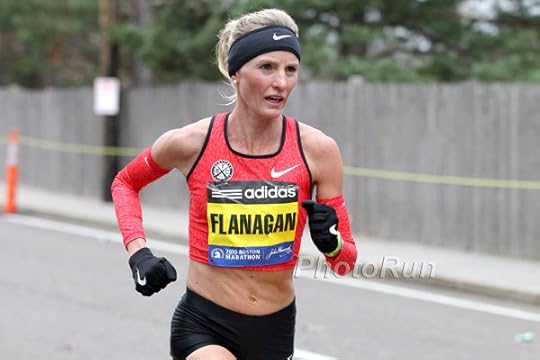
Shalane Flanagan, 34, Portland, Ore., marathon (Nike)
Shalane Flanagan is the second-fastest marathoner in U.S. history (2:21:14) and the 2012 U.S. Olympic Trials Marathon champion. After a disappointing ninth-place finish at the Boston Marathon in April, she's been honing her speed while gearing up for 2016—in what could be her fourth Olympic team.
View Larger Image
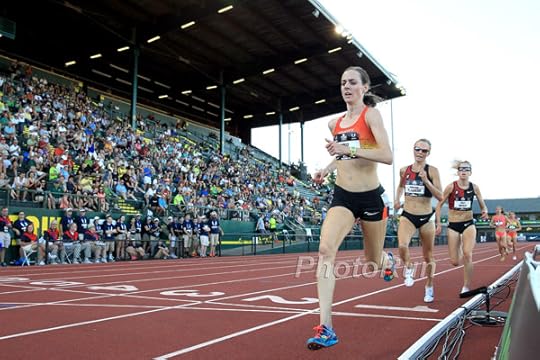
Molly Huddle, 30, Providence, Rhode Island, 10,000m (Saucony)
Not only has Molly Huddle has been one of America's best distance runners in recent years, she's also been one of the world's best. She's twice lowered the American record in the 5,000 (14:42.64) and finished 11th in that event at the 2012 Olympics. This year she won the NYC Half Marathon in a personal best 1:08:31 and won the U.S. title on the track in the 10,000m run. Photo: PhotoRun.net
View Larger Image

Evan Jager, 26, Portland, Ore., 3,000m steeplechase (Nike)
If he hadn't tripped over the last barrier during a race in Paris, Evan Jager might have become the first American runner to break the 8-minute mark in the 3,000m steeplechase. But his 8:00:45 U.S. record shows that he's ready to compete for a medal at this summer's world championships and the 2016 Olympics. He's been close before—placing fifth at the 2013 world championships and sixth at the 2012 Olympics. Photo: PhotoRun.net
View Larger Image

Meb Keflezighi, 40, San Diego, marathon (Skechers)
Can Meb Keflezighi continue his world-class efforts for one more year? It sure seems likely, even though he recently celebrated his 40th birthday. Already a three-time Olympian (with a silver medal from the 2004 Olympic marathon), Meb followed up his 2014 Boston Marathon victory with a credible eighth-place, 2:12 effort in 2015. Photo: PhotoRun.net
View Larger Image

Leo Manzano, 30, Austin, Texas, 1500m (Hoka One One)
With his experience and deadly kick, you can never count Leo Manzano out. He was the silver medalist at the 2012 Olympics in London and has been a top-three finisher at the U.S. championships for 10 straight years! He set his personal best in 2014 with a 3:30.98. Photo: PhotoRun.net
View Larger Image

Brenda Martinez, 27, Big Bear Lake, Calif., 800m (New Balance)
Brenda Martinez has come on strong over the past three seasons, winning a bronze medal at the 2013 world championships and lowering her personal best to 1:57.91. She placed second at the U.S. championships in June. Photo: PhotoRun.net
View Larger Image
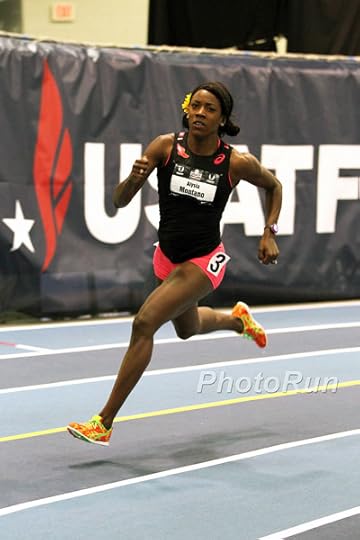
Alysia Montano, 29, Los Angeles, 800m (ASICS)
Alysia Montano has won two U.S. titles (indoor 1,000m, outdoor 800m) and a Pan American Games silver medal (800m) since giving birth to a baby girl last August. She's a six-time U.S. champion in the 800m and has twice finished fourth in the world championships. She owns a bronze medal from the 2010 world indoor championships and a fifth-place finish from the 2012 London Olympics. Photo: PhotoRun.net
View Larger Image

Dathan Ritzenhein, 32, Grand Rapids, Mich., marathon (Nike)
When Dathan Ritzenhein is healthy, he's a world-class runner, one of the very best in the U.S. Although injuries have riddled his career, he turned in a solid effort at the 2015 Boston Marathon (7th, 2:11:20) . He's already a three-time Olympian with a ninth-place finish in the marathon in 2008 in Beijing and a 13th-place showing in the 10,000 in London in 2012. Photo: PhotoRun.net
View Larger Image

Shannow Rowbury, 30, Portland, Ore., 1500m (Nike)
Shannon Rowbury set the American record in the 1500m (breaking Mary Slaney's 1983 mark with a 3:56.29 effort) and also owns a bronze medal from the 2009 world championships in Berlin. She finished second at this year's U.S. championships. Photo: PhotoRun.net
View Larger Image

Galen Rupp, 29, Portland, Ore., 10,000m (Nike)
Coached by Nike's Alberto Salazar since he was in high school, Galen Rupp has been one of America's top distance runners for more than a decade. He's the American record-holder in the 10,000m (26:44:36) and was the silver medalist in the event at the 2012 Olympics in London. Photo: PhotoRun.net
View Larger Image

Jenny Simpson, 28, Boulder, Colo., 1500m (New Balance)
In championship races, Jenny Simpson is hard to beat. She won the 1500m at the 2011 world championships in South Korea and nearly repeated her gold in 2013 in Moscow when she had to settle for silver. She previously held the American record in the steeplechase and owns nine U.S. titles on the track. Photo: PhotoRun.net
View Larger Image
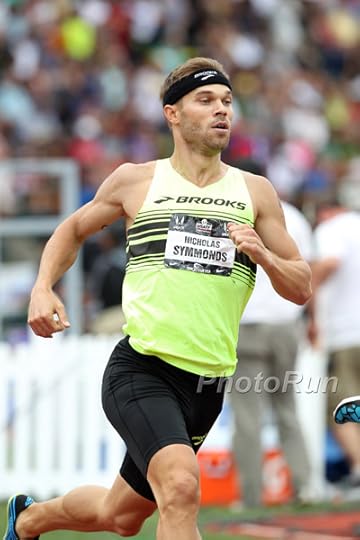
Nick Symmonds, 31, Seattle, Wash., 800m (Brooks)
Aside from the recent controversy about Nick Symmonds being kept off the U.S. team heading to this month's world championships, he's been one of the top middle-distance runners the U.S. has had since 2007. He's a six-time U.S. champion, won a silver medal at the 2013 world championships and finished fifth at the 2012 Olympics in the fastest race in history. Photo: PhotoRun.net
View Larger Image

Ben True, 29, Hanover, New Hampshire, 5,000m (Saucony)
A former All-American skier for Dartmouth, Ben True has come on strong as a runner since 2011. He's won four U.S. road racing titles, placed 6th at the 2013 World Cross Country Championships and earlier this year, won the BAA 5K in a new American record on the roads in 13:22. Photo: PhotoRun.net
View Larger Image
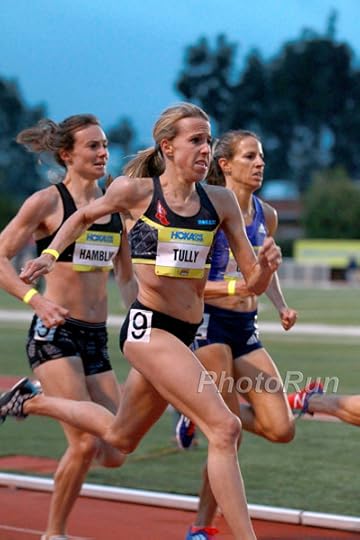
Nicole Tully, 28, Piscataway, N.J., 5,000m (Hoka One One)
Nicole Tully burst on the scene this summer by winning the U.S. championships—in only the second 5K race of her life—to earn a spot in the world championships later this month in Beijing. The former Villanova All-American also works a full-time advertising and public relations job. Photo: PhotoRun.net
View Larger Image
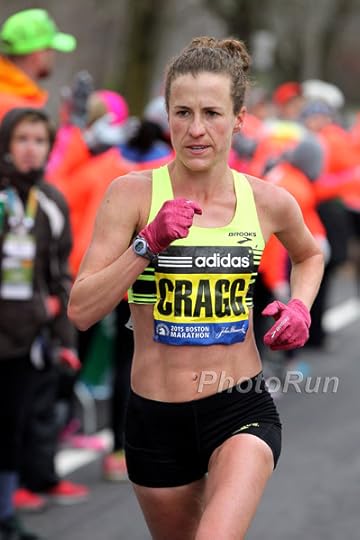
Amy Cragg, 31, Providence, Rhode Island, marathon (Brooks)
Amy Hastings narrowly missed the U.S. Olympic team in the marathon, finishing a hard-luck fourth place at the 2012 trials. But she rebounded and made the team in the 10,000m, eventually finishing 11th at the London Olympics. She's twice run 2:27:03 in the marathon (making her the eighth-fastest U.S. runner ever). She had a rough Boston Marathon in April, but later finished fourth in the 10,000m at the U.S. championships. She's expected to race the Berlin Marathon in September. Photo: PhotoRun.net
View Larger Image
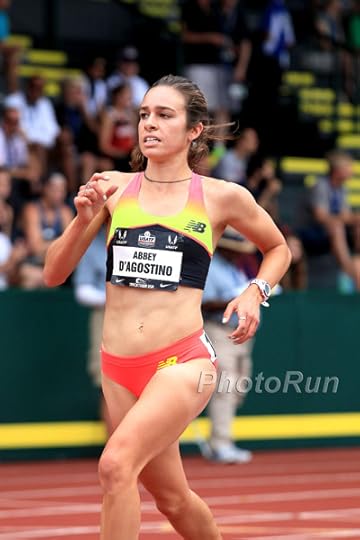
Abbey D'Agostino, 23, Topsfield, Mass., 5,000m (New Balance)
Already one of the top young runners in the U.S., D'Agostino won seven NCAA titles at Dartmouth before turning pro. She's had a breakthrough year in 2015, placing third at the U.S. championships to earn a spot on the U.S. team heading to the world championships and lowering her PR to 15:03.85. Photo: PhotoRun.net
View Larger Image

Ajee Wilson, 21, Neptune Township, N.J., 800m (adidas)
Wilson, who turned pro as an 18-year-old in 2012, has the fastest 800m in the U.S. this year, having clocked a personal best 1:57.87 at the Pre Classic on May 30. She was runner-up at the 2015 U.S. Outdoor Championships but will not compete at the world championships due to injury. Photo: PhotoRun.net

More Galleries
The post 20 Runners Who Could Make The 2016 U.S. Olympic Track Team appeared first on Competitor.com.
Workout of the Week: The Kardong Fartlek

Photo: Shutterstock.com
Let me know if one of these scenarios resonates with you right now:
1. The last race you ran was a few months ago and almost all your running of late has been easy and unfocused. But the fall racing season is right around the corner and you know it’s time to start adding some intensity back into your training schedule.
2. You’ve been doing weekly track workouts throughout the summer and you’re getting tired of running around in circles.
Fortunately, we’ve got a workout to help dig you out of either situation. The Kardong Fartlek—named for Don Kardong, a collegiate track champion at Stanford and 1976 U.S. Olympic marathoner—is a great short speed session for transitioning back to faster workouts after an extended time away from hard training, but it can also be used as an intense off-the-track interval session when you’re fit and in flying shape. It can work for runners focusing on the 5K or even those preparing for a marathon. The key is adjusting your pace, along with the number of sets and recovery, to suit your individual needs.
Here’s how to do it:
The Warmup
— 10-20 minutes of jogging followed by 4-6 x 20-second strides
The Workout
— Run at your 5K race pace for 2 minutes, followed by 90 seconds of easy jogging. Next, run for 1 minute slightly faster than your 5K race pace, followed by 1 minutes of easy jogging. Finally, run for 30 seconds at your 1-mile race pace (roughly 30 seconds per mile faster than your 5K race pace), followed by 30 seconds of easy jogging. That’s one set. Aim for 2-5 sets depending on your experience, current fitness level and training focus. Starting off at a slower pace—such as 10K or half-marathon effort—and taking a longer rest after each set is fine, too.
— For recovery, jog for two minutes after the 2-minute interval and 60 seconds after the 1-minute pickup. Take a 2:30 jog for recovery in between sets.
The Cooldown
— 10-20 minutes of jogging
Kardong liked to do a variation of this workout when he needed a break from running intervals on the track, according to Michael Sandrock’s book Running Tough. If he was getting ready for a track race, Kardong would do fewer sets with less recovery. Before a marathon, however, he’d often opt for more sets with longer rests.
“I liked using time because it’s easy to keep track of on a digital watch,” Kardong was quoted as saying in the book. “This had some of the advantages of fartlek since I was relieved of the mental burden of trying to run a certain precise distance in a certain time, and I wasn’t confined to an oval. And it had the advantage of a track workout in that there was structure to it, which I found helpful. I also liked the mix-up of distances.”
For experienced half marathoners and marathoners, doing 5 to 7 sets of these surges at 10K to half-marathon effort in the middle of a long run is a great way to practice running faster on a fatigued set of legs, as well as to get ready for dealing with the irregular rhythm and pace changes you’ll surely face on race day. Runners preparing for 5K-10K racing can benefit from 2 to 5 sets of faster surges as described above. Adjust the key variables—pace, recovery and the number of sets—to line up with your current fitness level and training focus.
RELATED: The Halftime Fartlek
The post Workout of the Week: The Kardong Fartlek appeared first on Competitor.com.
Coach Culpepper: The Real Benefit of Easy Days
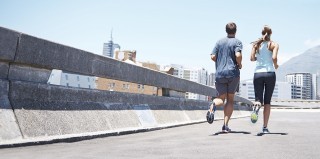
Photo: Istockphoto.com
With all the discussion and focus surrounding speed workouts, long runs and mileage, we often lose sight of the most dominant aspect of any training program: easy days. While they don’t have the cachet of mile repeats or a 20-mile long run, they’re critical to your training.
Are you recovering on easy days?
“Recovery” is a very loose term. You are not actually recovering by running easy—you are giving your system a break from intense training. “Easy day,” then, is more accurate than “recovery day.” Easy days simply keep you from becoming more physically and muscularly fatigued to ensure the body’s physiological systems do not get overloaded. Without factoring in easy days, something will inevitably break down.
Why should they be included?
So why include easy days? If the goal is to recover, why not just take a day off? A day off would be considered a true recovery day, and if you are new to targeted training then days off should be a part of your program. There is a misconception that only speed workouts and long runs stress the various systems enough to make significant physical improvements. This is not the case. Easy runs improve overall aerobic and muscular fitness—and provide a slight amount of physical stress, which forces the body to adapt.
How easily should you run?
This is difficult to answer because every athlete responds differently to training. There is no magic formula that says your easy days should be ‘x’ pace per mile. Pacing and heart rate guidelines certainly exist (and are worth experimenting with) but they don’t hold true across the board. Some athletes can handle a quicker pace on easy runs while others need to run much slower. I’ve found that many athletes run far too slow on their easy days because they are thinking of them only as “recovery” and not as a means to getting fitter, while others run them too fast and those efforts become a slightly slower version of their hard workouts. When all workout paces start to blend together, everything becomes a moderate-intensity effort. It’s critical to vary your intensity to ensure that all your physiological systems are properly stressed.
RELATED: Ask Mario: What Pace Should My Easy Runs Be?
The post Coach Culpepper: The Real Benefit of Easy Days appeared first on Competitor.com.
Why Are There So Many Running Shoe Brands?
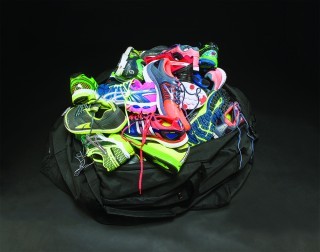
Photo: Scott Draper
A decade ago, the eight largest running shoe brands ruled the industry. Back then, adidas, ASICS, Brooks, Mizuno, New Balance, Nike, Reebok and Saucony were the primary brands you’d see at running stores, group runs and races. There were a few other smaller companies, but if you were a runner in 2005, you were probably wearing one of these brands.
A huge new surge in running participation, fresh fitness trends, innovative ideas and new technology has led to an explosion in brands. More than 35 shoe manufacturers are selling legit running models in the U.S. this year.
New companies like Altra, Hoka, Newton, Skechers, Topo, Under Armour and Vibram have sprouted, while companies known for outdoor equipment and apparel like Merrell, Salomon, The North Face and Vasque have tried to take a bigger piece of the trail running pie. At the same time, established overseas brands such as 361° USA (China), Inov-8 (UK), Karhu (Finland), ON (Switzerland), Salming (Sweden) and Scott (Switzerland) have tried to make greater inroads to the U.S. market.
Why so many? The short answer is because running has become increasingly accessible to an ever-growing fitness-conscious population. From newcomers to longtime runners to CrossFitters, obstacle racers and novelty-run participants, the common denominator is that everyone is wearing (and buying) running shoes. Running shoes have also become the de facto casusal shoe of choice for non-runners.
“Everybody wears running shoes,” says Kris Hartner, owner of Naperville Running Co. in suburban Chicago. “There are more shoes out there than ever, but there are better shoes now than ever before too.”
RELATED: 10 Reasons to Shop at Running Specialty Stores
From a business point of view, the relatively low cost of production, ubiquitous mainstream appeal and the high retail markup make it a very attractive sector to be in.
But what’s past is prologue. Numerous brands have come and gone from the U.S. running market in previous decades—including Converse, Diadora, Etonic, Fila, LA Gear and, most recently, K-Swiss and Patagonia—and consolidation could be imminent in the not-so-distant future as smaller brands struggle to hold onto a tiny percentage of market share.
RELATED: Is New ShoeKicker Site a Help to Runners or a Hindrance to Running Stores?
The post Why Are There So Many Running Shoe Brands? appeared first on Competitor.com.
565,000 Reasons to Run in Dublin
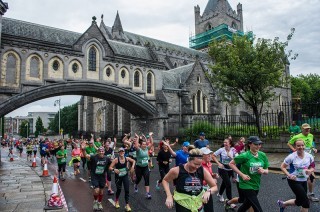
Photo: Ryan Bethke
The annual Rock ‘n’ Roll Dublin is a showcase of Ireland’s generosity.
Melissa Beach was running late. Her hotel three miles from the start of the Rock ‘n’ Roll Dublin Half Marathon, Beach tried hailing a cab. But they sailed past, fares in tow. Then a gentleman approached, a local not running the race but simply a spectator. He had reserved a cab and invited Beach aboard.
“He paid for the cab and wished me luck,” recalled Beach, who works for Delta and has done her share of traveling.
“The Dublin people go out of their way to be friendly,” Beach said.
Ireland offers many lures for the vacationing running tourist. There’s the rolling green hillsides, the spectacular Cliffs of Moher, about a three-hour drive from Dublin. There’s the Guinness factory, cathedrals, cobble-stoned streets and stone facades.
But Dublin’s strongest magnet is its people. From cabbies to hotel receptionists to people walking the streets, Dubliners’ attitude seems to be “Welcome to our home. Live large.”
Kevin Bliss works as a federal corrections officer, specifically teaching inmates, helping them earn high school degrees. He, too, has traveled often and says he has found no one friendlier than the Irish.
“Oh my gosh, they’re ridiculously nice,” said Bliss, who finished Sunday’s race in 1:47:30. “The nicest people I’ve ever encountered. The nicest culture. And I’ve been around.
“In New York or Miami, you talk to someone about business then you’re on your way. Here, they actually care. They want to talk to you. They want to get to know you. It doesn’t seem business is their prime concern. It’s getting to know you.”
RELATED: Photos: 2015 Rock ‘n’ Roll Dublin
Mike Michalski lives in Portland and works as a nurse. He’s a Rock ‘n’ Roll Marathon Series veteran, having run six races this year with plans to knock off four more. He stayed with friends who made sure his linens were clean and that he had all the comforts of home. “If they didn’t have a bed, they would have bought one,” said Michalski.
He drew a line though with the hosts’ hospitality.
“They tried not to let me buy pints at the pub,” he said, “but that wasn’t going to happen.”
The race begins at The Point Village, conveniently located at the end of a tram line. The first three miles parallel the Liffey River. At the Saint James Guinness Brewery, the course veers away from the river, past stone walls, cathedrals and the Museum of Modern Art.
Few races can match Dublin’s finish, the last five miles winding around and through 176,000-acre Phoenix Park, Europe’s largest park. Picture shades of green as far as the eye can see – trees, grass and open fields. While men’s winner Paul Pollock and runner-up Mick Clohisey were waging their one-on-one footrace, late in the half marathon a deer bounded beside them in a field, then cut in front of them across the road.
Beach offered the best description of Phoenix Park.
“Oh wow, this is a place where you’d just like to come and have a picnic.”
Regarding the course as a whole, Beach added, “It was beautiful. I love all the sites. The day before I was on a bus, taking them in. Running today, I got to see them up close again.”
Whether you’re a Guinness fan or not, a tour of the beer factory is highly recommended. Beer aficionados will enjoy the videos detailing how the dark beer is brewed. Quick fact: 100,000 tons of Irish barley are used every year in making Guinness.
The Guinness tour costs 18 euro (about $20 U.S.) and includes a pint of beer. Be it psychological or not, many claim beer downed at the factory is the best tasting Guinness in the world. If you take in the tour, make sure to sample your free pint atop the Gravity Bar, 151 feet above the ground, which affords a spectacular 360-degree view of the city and surrounding landscape.
You’ll take in brick buildings, steepled churches, green and blue domes, the 51,700-seat Aviva Stadium, rolling hillsides, a shipyard and every shade of green imaginable.
There are 565,000 reasons to visit Dublin, which is the estimated city population. Because should you visit the Ireland capital, it’s the people who will bring you back.
The post 565,000 Reasons to Run in Dublin appeared first on Competitor.com.
5 Storylines to Watch at the Falmouth Road Race
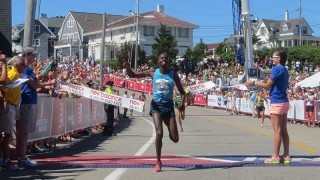
Micah Kogo at the 2013 Falmouth Road Race. Photo: Chris Lotsbom/Race Results Weekly)
(c) 2015 Race Results Weekly, all rights reserved. Used with permission.
The 43rd New Balance Falmouth Road Race will feature one of its strongest fields ever, with accomplished American and international athletes competing over the seven-mile coastal course from Woods Hole to Falmouth Heights in Massachusetts. Defending champion Stephen Sambu and two-time winner Micah Kogo lead the international field, while Olympian Amy Hastings and Bowerman Track Club athlete Chris Derrick front the American charge. In anticipation of Sunday’s race, Race Results Weekly takes a look at five storylines to watch out for.
Sambu, Kogo Battle Again
In 2014, Stephen Sambu dominated the coastal race by 30 seconds, finishing ahead of Micah Kogo and fellow Kenyan Emmanuel Bett. This year, Sambu and Kogo will once again seek podium finishes, vying for their second and third titles, respectively. No athlete has won back-to-back Falmouth Road Races since Gilbert Okari claimed three straight from 2004 through 2006.
Joining Sambu and Kogo from East Africa are Uganda’s Moses Kipsiro and Kenyan Daniel Salel, both of whom placed in the top three at the TD Beach to Beacon 10-K on August 1 in Maine. Salel, the 2015 B.A.A. 10K winner, told Race Results Weekly that he was eagerly awaiting the race on Cape Cod, excited to compete once again in New England. He spent the two weeks in between Beach to Beacon and Falmouth training in Boston.
“It is my first time there, and I am excited,” he told Race Results Weekly. “I am preparing in Boston for a week to win Falmouth. I am ready to run fast.”
Also competing from Kenya is Leonard Korir, this year’s United Airlines NYC Half champion.
Men on a Mission
Athletes from Kenya have won 19 Falmouth Road Race men’s titles since 1991, a streak of dominance that Chris Derrick and his fellow Americans look to end. The last American male to win on the roads to Falmouth Heights was Mark Curp in 1988 (Ben True was a close second to Kogo in 2013).
Derrick will be joined by Meb Keflezighi, Aaron Braun, Abdi Abdirahman, and Christo Landry. Sam Chelanga, who is nearing the completion of his transfer from Kenyan to American allegiance, is also expected to race. Of the group, Abdirahman has the most experience in Falmouth, finishing fourth in 2013 and fifth in 2011.
“I want to compete with the best to see how my training is going, how fit I am,” Abdirahman told Race Results Weekly in Maine. “The past few months I’ve been training well, been healthy. The [U.S. Olympic Marathon] Trials are still like seven months away so the excitement is building up now, but I’m trying not to get too excited… I’m distracting myself from just training with these races.”
North Carolina’s Andrew Colley, the second American and fifth place finisher overall, returns as well.
American Women
On the women’s side Amy Cragg, who recently relocated to Portland, Ore., will be accompanied by compatriots Sara Hall, Neely Spence Gracey, Liz Costello, and Alexi Pappas. Cragg finished seventh here in 2011, while Pappas was the top American at the TD Beach to Beacon 10K earlier this month, defeating Costello by a second. Cragg, Hall, and Pappas have all finished in the top 10 at Falmouth at least once in their careers.
“I think both Beach to Beacon and Falmouth have great American women in it,” said Pappas. This will be her last race of the season. “I think every race you put yourself up there, you put yourself in a position to surprise yourself.
“I’m going to finish up my season there… It’s going to be a really good last race,” she continued.
The deep American field also includes Katie Matthews and Tara Wellings (formerly Erdmann; ninth and 10th a year ago), Sarah Pagano, Cally Macumber, Stephanie Dinius, and Katie DiCamillo.
Podium Potential
Burundi’s Diane Nukuri is coming off a very strong performance in Maine (second at TD Beach to Beacon 10K), and looks to continue her hot streak in Falmouth, where she placed second to American Magdalena Lewy Boulet in 2011. She was also fourth a year ago.
Ethiopia’s Sentayehu Ejigu won the Tufts 10K for Women in Massachusetts in 2013, and finished third at the TD Beach to Beacon 10K this month. Traditionally the race in Maine is an indicator of fitness heading into Falmouth; Ejigu aims to be the first Ethiopian to win Falmouth since Mamitu Daska and Wude Ayalew did so in 2009 and 2010.
Another international athlete to keep an eye on is New Zealand’s Laura Nagel, a former All-American at Providence College. Nagel placed 12th in 2014, though has consistently run well here in New England throughout the summer months. Last weekend she won the competitive Bobby Doyle Summer Classic 5 miler (USATF New England Championship), and the weekend prior she set an event record at the Run 4 Kerri 4 mile.
Records and New Countdown Bonus
The New Balance Falmouth Road Race is in its 43rd year, an annual summer tradition on Cape Cod. A total prize purse of $102,000 is offered in guaranteed prize money, including $7,000 in American-only awards. The men’s and women’s course records stand at 31:08 and 35:02, set by Gilbert Okari and Lornah Kiplagat, respectively.
This year, the race will feature a gender-based challenge called “The Countdown.” A clock will start when the first woman breaks the tape, counting down the number of minutes and seconds the top male has to beat in order to win a $5,000 bonus. If the clock runs out before the winning male crosses the finish line, the top woman receives the bonus. Organizers have not yet announced what the time gap will be.
The post 5 Storylines to Watch at the Falmouth Road Race appeared first on Competitor.com.
Video: What Caught Our Eye at Outdoor Retailer
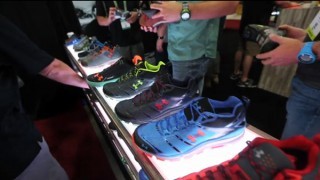
We spent three days checking out new gear at the Aug. 4-8 Outdoor Retailer trade show in Salt Lake City. So what did we see? This video offers a glimpse of all the madness from the trade show that showcases running gear coming to stores soon.
RELATED: Sneak Peek: First Look at 31 Shoes for 2016
RELATED: Sneak Peek: 2016 Running Apparel and Accessories
RELATED: First Look: Altra IQ, the High-Tech Shoe
The post Video: What Caught Our Eye at Outdoor Retailer appeared first on Competitor.com.
August 11, 2015
Over-40 Elites Still Mastering Their Domain
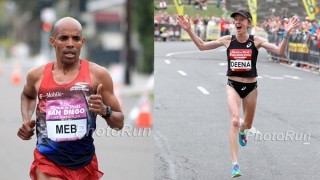
Meb Keflezighi (left) and Deena Kastor are among the 40-and-over runners still on top of their game. Photos: PhotoRun.net
When Meb Keflezighi won the 2014 Boston Marathon using a bold and well-timed mid-race breakaway, the major story was his becoming the first American man to win the race in 31 years.
Not far behind on the attention-grabbing scale, though, was the fact that Meb had accomplished the feat just two weeks shy of his 39th birthday, making him the oldest person to win the race since 1931.
Approaching his 40th birthday this year, there was plenty of chatter about Meb’s chances of remaining at the world-class level as a masters runner. And sure enough, while Meb struggled in the last 10K of this year’s Boston Marathon and finished eighth, he rebounded to run 1:02:29 at the Rock ‘n’ Roll San Diego Half Marathon on May 31 a few weeks after his 40th birthday, good for second overall. While his time—54 seconds under the U.S. masters mark—couldn’t replace Mbarak Hussein’s name in the record books because of the course’s net elevation drop, Meb was still credited with American masters records of 44:23 for 15K and 47:39 for 10 miles.
Keflezighi is not alone in recently blurring the line between “elite” and “age-group elite.” Bernard Lagat turned 40 last December, and wasted no time in setting three world indoor masters records: 3:54.91 for the mile, 7:37.71 for 3,000 meters and 8:17.05 for 2 miles. In May, in a rare foray onto the roads, Lagat blitzed a 27:48 10K, which was not only a new masters world record but tied Marc Nenow’s 33-year-old American open record. Outdoors this year, Lagat has set world 40-plus records of 3:41.87 for 1,500 meters and 13:14.97 for 5,000 meters.
RELATED: Do’s and Don’ts For Masters Runners
Internationally, there is no shortage of elite runners who have marched into mastershood without interruption. Haile Gebrselassie, who announced his retirement in May at age 42 after a two-decade career as probably the best all-around distance runner in history, set masters world records at 10K (28:00, since broken by Lagat), 10 miles (47:00) and the half-marathon (1:01:09). Great Britain’s Jo Pavey won the 10,000m at last year’s European Track and Field Championships. New Zealander Lorraine Moller’s career at the highest level spanned close to 30 years and four Olympics, concluding with her appearance in marathon at the 1996 Olympic Games in Atlanta at age 44.
Stateside, however, the masters scene has traditionally been left in large part to athletes who competed either sparingly or not at all in their post-collegiate years. Pete Magill, who ran a 14:45 5K at 49, is an archetypal example. Though Magill’s path to becoming an elite master was roguish in spots—the now-53-year-old former screenwriter once smoked up to four packs a day—it was typical in many respects: He was a solid prep and All-American junior-college runner, then stepped away from running for nearly two decades before picking it up again at 39 chiefly for health reasons. Within two years, Magill had run 3:56 for 1,500 meters and 8:31 for 3,000 meters, and was later nearly unbeatable in the 45-to-49 division.
So what’s driving the shift toward older elites refusing to hang ‘em up in their mid-30s like in the past? Simply, it seems to be America’s best are finding fewer and fewer reasons to quit as they age.
Deena Kastor, who holds U.S. half-marathon (1:07:34) and marathon (2:19:36) records as well as an Olympic marathon bronze medal, has goals that are as pragmatic as ever, even now at 42.
“My focus isn’t on age-group winning or even winning itself, but in embracing the challenge every day,” she says. “There is such a thrill to pursue unending improvement and even greater value in sharing it within the running community I cherish. In the height of my career I was very goal-oriented and focused on that goal to bring out the best in my training. Now, I focus on making the most of each day and the lessons a good long run can teach us about ourselves.”
After turning 40 in February 2013, Kastor finished third at the 2013 LA Marathon and ninth at the IAAF World Championship Marathon later that year in Moscow, and last September established a world masters half-marathon record, running 1:09:39 at Rock ‘n’ Roll Philadelphia.
Three-time Olympian Jen Rhines, who turned 41 last month, says that despite making adjustments owing to getting older, she still has her eye on chasing the overall leaders.
“For me, the act of actually turning 40 reinforced the idea of taking the easy days a little easier and not going to the well in every workout,” she says. “I can still do the hard workouts but they don’t occur as frequently. Stepping on the line fresh and ready to go has helped me be a much more consistent competitor.”
Rhines has attempted to balance a modicum of realism with maintaining high aspirations. “My fastest days may be behind me, but I still enjoy setting big goals and going after them,” she says. “Competing against the open women is what drives me to my best performances, such as setting the U.S. Masters 10K record at the Tufts 10K in Boston last fall (32:32). Placing third at the U.S. Cross-Country Championships this year was probably the hardest I’ve run in a really long time.”
RELATED: Fast After 40
Sonja Friend-Uhl , a 44-year-old mother of two, has earned a slew of masters titles and set numerous records since joining the 40-and-over ranks. Despite focusing on traditionally age-unfriendly events such as the 1,500 meters, she shows few signs of slowing down, and echoes many of her peers’ sentiments.
“The source of my motivation to continue to train and race as I age is really no different than it ever has been,” says the Nashville-based athlete who set an American outdoor mile record (4:45.68) in June to go with her indoor mile AR of 4:44.81 from 2012. “It’s that insatiable, never-ending quest to find the best in myself, to do better than yesterday or last season—or maybe even better than ever.”
While she acknowledges that “better than ever” may be out of reach at this point, she notes that it’s just as fulfilling to at least try and see what she can do and push her mental, physical, and sometimes emotional limits. “I’m proud of being a top masters runner,” she admits, “but it’s not what defines me or my goals. I am simply a runner, a track athlete, just as I always have been.”
The most recent addition to the American elite masters scene is multi-time national cross-country champion and 2008 Olympian Blake Russell, who turned 40 on July 24 after winning the 2015 U.S. Marathon Championship in Los Angeles in March. Unlike others, Russell’s training adjustments have stemmed more from lifestyle considerations than physical ones. Russell has two young children, and with a working husband and childcare an issue, she’s not running her accustomed doubles these days. Otherwise, she remains focused on competing at the 2016 U.S. Olympic Trials Marathon, which will also be held in Los Angeles next February.
Thanks to Keflezighi and other 40-somethings who have refused to slow down, a clear picture is emerging within the elite crowd. Like in other sports, people realize that not only is turning 35 no reason to start drawing up retirement papers, but you can run surprisingly close to your best lifetime performances in your late 30s and early 40s given the right combination of training, attitude, recovery and luck. It’s not out of the question that the U.S. could have one or more Olympic runner in the 40-and-older age range in 2016.
While the battle cry “age is just a number!” is surely overstated, that number need not be limiting or frightening. And if something is working for elite runners, there’s no reason it can’t work for the rank and file, too.
The post Over-40 Elites Still Mastering Their Domain appeared first on Competitor.com.
Shoe of the Week: Nike Lunarglide 7
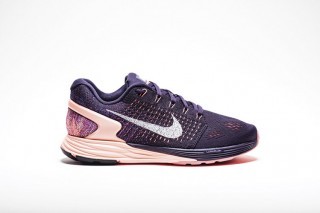
Fit-Feel-Ride: Lucky seven? You bet. The Lunarglide shines in its most recent iteration, which has been stripped of its overlays and redesigned with a seamless, open-mesh upper that comfortably and reliably secures the foot (with Nike’s patented Flywire cable system) to the resilient midsole chassis. Combined with an internal bootie and a luxurious interior, the Lungarglide 7 is as comfy and secure-fi tting as any trainer on the market. A TPU heel counter provides support and stability to a flexible shoe that otherwise runs like the beautiful lightweight trainer that it is. It features Nike’s Dynamic Support platform, which provides just the right amount of stability for a wide range of gait types without the added weight or stiffness of a traditional medial post.
This is the shoe for you if … You need an everyday trainer with an ideal balance between stability and responsiveness.
Plus: It’s capable of long runs at a variety of speeds as well as quicker-turnover types of workouts.
Minus: A few of our wear-testers thought the fit was a bit too snug and preferred a half-size larger than their typical size.
Price: $120
Weights: 9.1 oz. (men’s 9.0); 7.9 oz. (women’s size 7.0)
Heel-Toe Offset: 10mm; 25mm (heel); 15mm (forefoot)
Info: NikeRunning.com
RELATED: Shoe of the Week—New Balance Vazee Pace
The post Shoe of the Week: Nike Lunarglide 7 appeared first on Competitor.com.
2016 Running Shoe and Apparel Trends
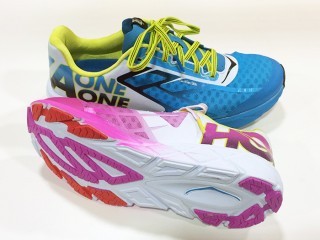
We spent three days checking out new gear at the Aug. 4-8 Outdoor Retailer trade show in Salt Lake City. The gallery of images below is a brief overview of running shoe and apparel trends based on 2016 products unveiled at the show.
RELATED: First Look at 31 New Shoes for 2016
VIDEO: First Look—Altra IQ High-Tech Shoe
Photo Gallery
1 of {count}
Back to Start
View Larger Image
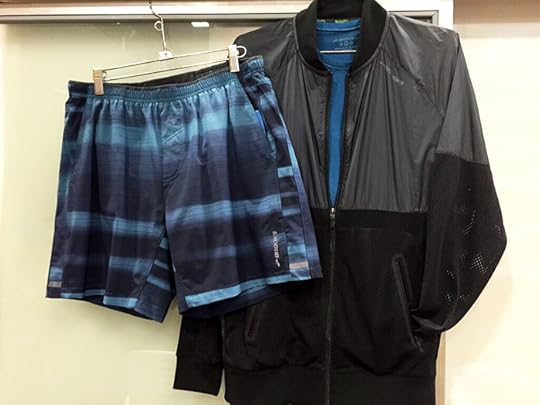
More for Men
Expressive colors, fusion of form and function and intelligent details, long a cornerstone of women’s fitness apparel, are now more readily available for men. Traditional cuts and colors still rule the racks, but many collections now include pieces with color blocking and patterns, as well as generous pockets and media ports.
Pictured: Bold Patterns rule in Brooks Sherpa 5” Short ($54), while blocked colors and mesh accents give a new look to the classic track jacket lines in the Run-Thru Jacket ($110)
View Larger Image
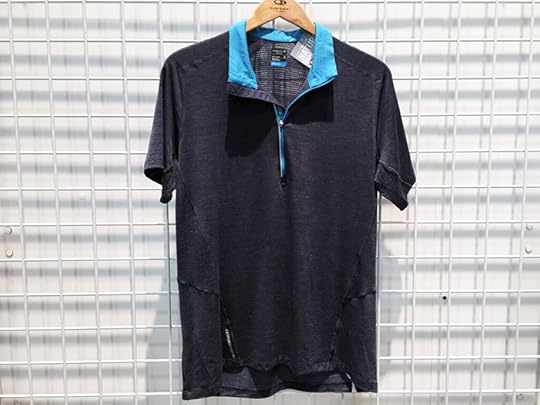
Athleisure and Sport Blending
Whether it's running clothes that look good enough for a post-run beer stop, like the Icebreaker Strike Half Zip SS pictured above, or brands making gear that can work for multiple sports, apparel companies have embraced the runner-led concept that running isn’t just something you do, it’s part of your life. Pictured: The Strike Half Zip SS ($100) from Icebreaker looks like a respectable collared shirt when unzipped, yet performs like a beast on the run.
View Larger Image

Creative Fabric Combinations
It’s long been the norm that when a new fabric technology was introduced, it was used in whole garments. Now companies are using not just the latest or best technologies and fabrics, but the smartest combinations of materials. Wicking, cooling, mesh and compression may be incorporated into key areas of one garment for the best possible user experience. At the same time, materials also continue to evolve. New fabrics sheer enough to see through when held to the light, yet demurely opaque on body, dry faster and breathe better than ever. Jacquard knits added to high sweat zones look pretty and enhance moisture evaporation. Pictured: La Sportiva’s Speed T Shirt ($79) and Sprint Tank ($59) incorporate stretchy, abrasion-resistant fabrics (for under hydration packs), ruching and a chafe-reducing glide treatment in their latest crop of running tops.
View Larger Image

Take it With You
We’ve become attached to our handheld devices and manufactures have taken notice, making it easier than ever to take it with you. Smartly placed and generously sized, moisture-resistant media pockets and mesh pockets with plenty of stretch are becoming more common. Pictured: Merrell’s Capra Tech Tee ($90) for men has a reinforced and moisture resistant media pocket on the chest.
View Larger Image
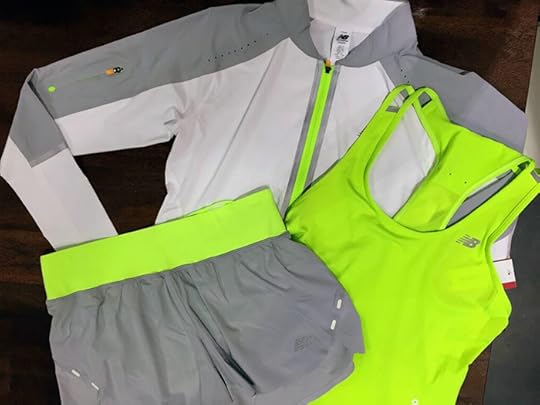
Fashionable Finishes
Just because sewn seams are a necessity doesn’t mean they can’t be fun. Sewing and seam sealing technologies have advanced to the point of being able to incorporate functional design embellishments. Color contrast seams, pin stitches, zigzag stitching and marrow hems appear in unexpected places. Zipper pulls become media cable holders and reflective pops and stitching make it easier than ever to stand out in a good way. The advanced technologies also give more freedom to design. Traditional shirts take an unexpected turn with open backs, curved drop tail hems deliver extra coverage, as well as shirts that stay in place, laser cut venting gets rid of sweat in artful designs and pops of color give basic pieces a fresh edge. Pictured: Getting a new PR feels easier in New Balance’s sleek Precision Run kit (shorts $80, Tank $80, half zip $135) with laser cut venting, tacked leg seams, reflective pops, seam sealed hems and color blocking.
View Larger Image
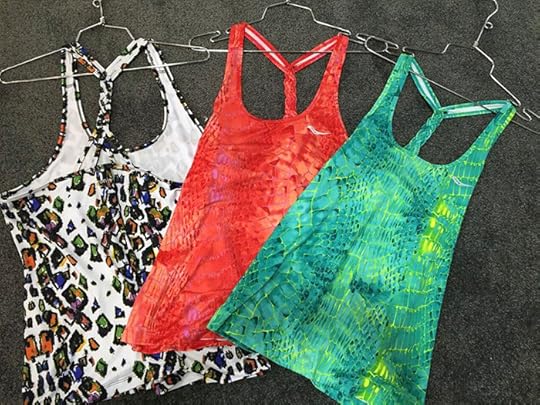
Bold Prints and Patterns
Bold geometric patterns, nature inspired prints, bright colors and more subtle hues are joyously rampant. Mix and match, set them off with a solid, wear a little or a wear a lot—the days of boring basics are long gone. Salomon, Patagonia and even L.L. Bean have joined the ranks of Nike, Saucony, and Skechers among others, with their own eye-catching prints to help runners stand out from the crowd. Pictured: Bold patterns mixed with a flowy fabric and braided back strap make bold statement in Saucony’s Strider Tanks ($42).
View Larger Image

Multi-faceted Materials
New materials are helping run shoe manufacturers make big advances in how shoes are constructed, how they fit and what kind of protection and safety they can offer. Pictured: Nike has enhanced its weatherized line of shoes for the winter (LunarGlide 7, Pegasus 32, Free 5.0 and Structure 19), improving the water-resistant construction without infringing on the natural flex patterns and also a adding multicolored "Aurora Borealis" reflectivity pattern.
View Larger Image
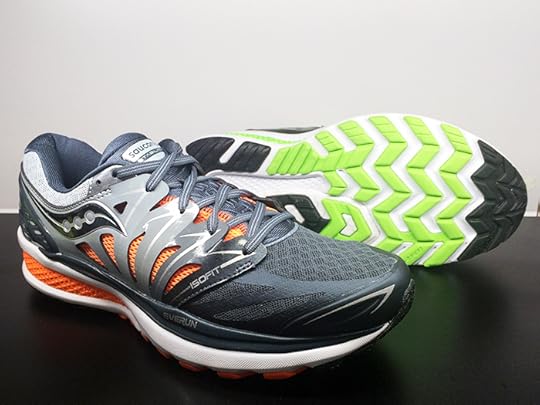
Cushion Is Still King
Let's face it, most runners really like cushioning under their feet and the advent of maximalist shoes has only made us appreciate and crave it more. Advances in material science has led to the development of new cushioning foams that are both absorbent and resilient. Pictured: Saucony's new Everun foam is a lively new material that provides considerably more energy return than standard EVA cushioning foams and maintains its resiliency three times longer. The new material will be inserted over the strobel board (underneath the cushioned sockliner) as well as in the impact zone of the heel (highlighted in orange in this shoe) to enhance the step-in feel and ride in the Hurricane ISO 2 other many other shoes in Saucony's line.
View Larger Image

Speed Rules
The combination of more runners training for races and a continued push to lighter shoes has led to a new wave of lightweight performance trainers that can double as racing flats. Picutred: One of the key shoes in Hoka's new speed line is the Tracer, a 7.1 oz. (men's size 9) speed flat with a 4mm heel-toe offset and a low-to-the-ground feel.
View Larger Image
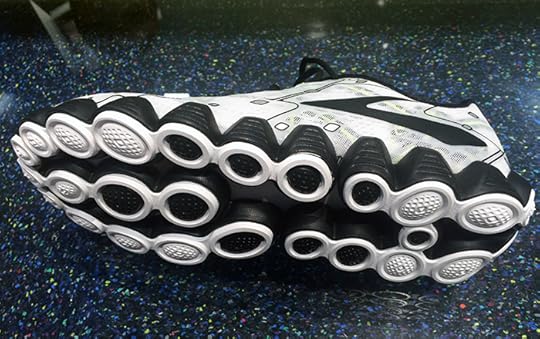
New is Better
Shoe brands are continuing to think outside the box in how they build shoes and that allows for innovations that lead to change. Pictured: The Brooks' Neuro lightweight trainer is one of the first shoes in the brand's Propel category, which is focused on a neutral ride with a balanced feel for the ground. Designed to be a fast performance-oriented everyday trainer for agile runners, the shoe completely decouples at the midfoot, offering maximum flexibility in all directions. The outsole and midsole are built on a series of unique cushioning pods that have softer foam interiors surrounded by columns of firmer materials. ($130, 6mm heel-toe offset, 9.4 oz)
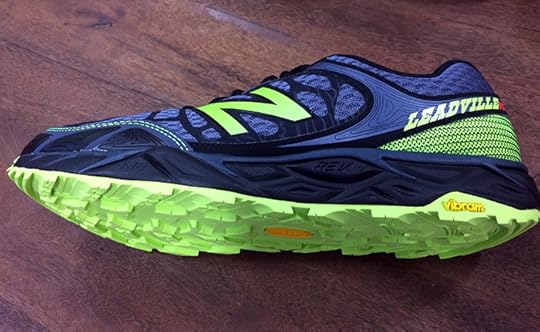
Trail Running is Rising
There are more trail running shoe offerings than ever before from more and more brands than ever before. Trail shoes are falling into three main categories: lightweight, agile short-distance racers, moderate do-everything models and more cushioned/protective long-haul shoes. And within each of those categories, shoes are being refined. Pictured: No longer carrying the 1210 numeric tag in its name, the new Leadville trail runner is about a 1/2 ounce lighter. It has a new outsole lug confirguration, a modern stability post (higher foam on the medial side) and new textile ripstop upper overlays. ($125, 8mm heel-toe offset, 10.8 oz.)

More Galleries
The post 2016 Running Shoe and Apparel Trends appeared first on Competitor.com.
Ryan Hall's Blog
- Ryan Hall's profile
- 21 followers



